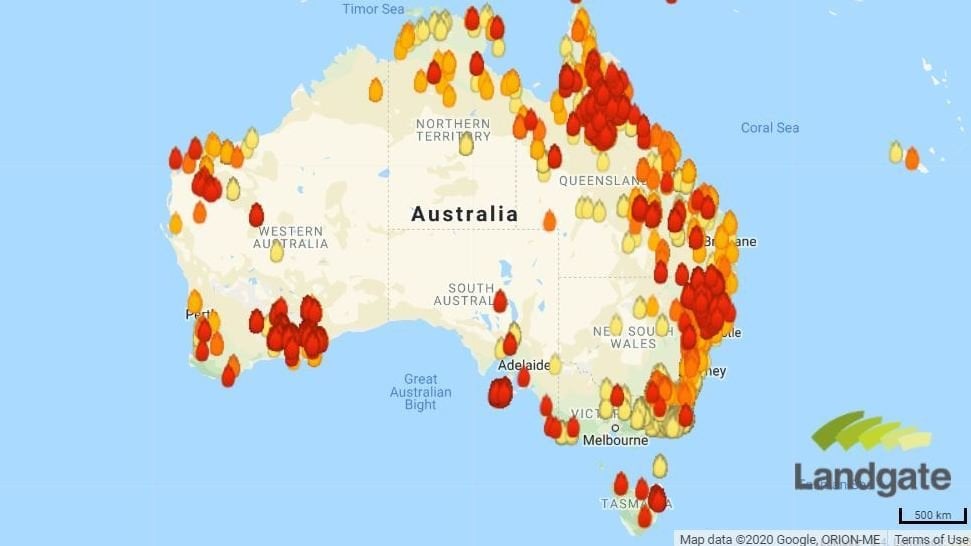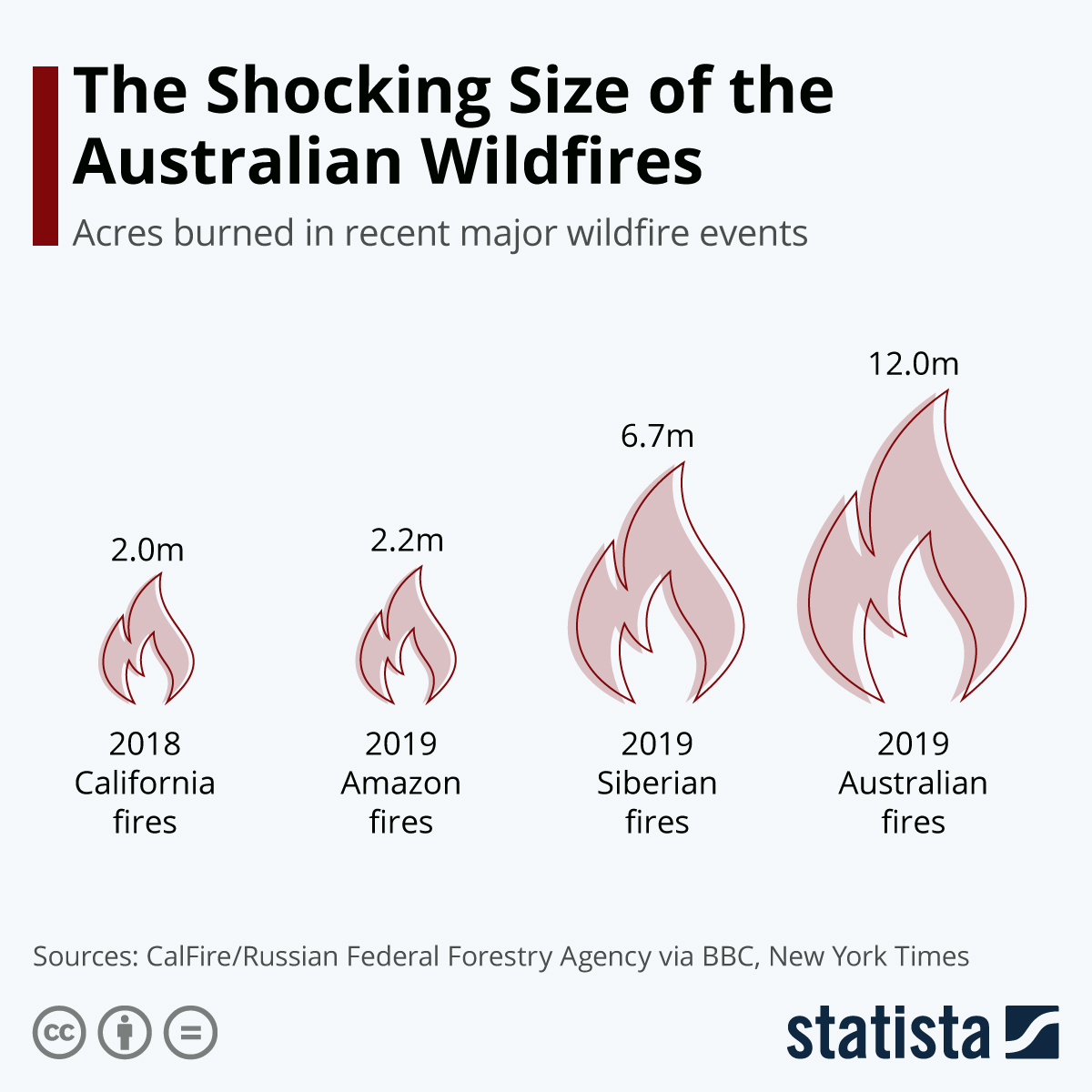
Though bushfires are a common occurrence in Australia during the summer, they have never been as devastating or as widespread as the ones currently burning across the country. Since September 2019, the blazes, fueled by dry foliage and strong winds, have scorched over 15.6 million acres (24,000 square miles) — an area larger than the state of West Virginia. Even worse, officials warn that Australia's wildfire season — which generally lasts through March — is nowhere near its end.
With over 130 active fires, 50 of which remain uncontrolled, New South Wales (NSW), Australia's most populous state has been particularly hard hit. The blazes have destroyed over 1588 homes, damaged 653 more, and killed 19 people and almost 500 million animals, including a third of NSW's koala colony, or about 8,000 bears. Nature Conservation Council ecologist Mark Graham told the Australian parliament: “[Koalas] really have no capacity to move fast enough to get away [from the flames]." Rescue workers have also reported seeing kangaroos trying to escape the massive walls of fire and cockatoos falling dead from trees.

The fires have also severely impacted the wildlife on Kangaroo Island off the country's southern coast. Among the hardest hit are critically-endangered small marsupials called dunnarts, a species whose 300 remaining members are all believed to have perished, as have about half of the island's 50,000 koala bears.
"The fires have also been devastating for Australia’s wildlife and wild places, as vital areas of bush, forests, and parks have been scorched and many millions of animals killed or injured," Dr. Stuart Blanch, senior manager of land clearing and restoration with World Wildlife Fund-Australia, told ABC News. "Until the fires subside, the full extent of damage will remain unknown."

Experts estimate that the bushfires have released 350 million tons of carbon dioxide, or about two-thirds of the nations' annual emissions, in just the past three months. Dr. Pep Canadell, a senior research scientist for the Commonwealth Scientific and Industrial Research Organisation (CSIRO) and the executive director of the Global Carbon Project, believes that due to the slow regrowth rates in Australian forests between bushfires, it could take 100 years for the carbon to be absorbed.
"We used to see hundreds of thousands of hectares burned in bushfires, but now we are seeing millions on fire," he said. "It is drying in south-east Australia, that prompts the question if these trees will be able to bring all that carbon back [into regrowth]. We may need more than 100 years to get back to where we were after those mature forests with beautiful tall gum trees have burned."

Australia's plight has not gone unnoticed. Since November 2019, firefighters from New Zealand, the USA, and Canada have been working tirelessly alongside their Australian counterparts to help curtail the fires' spread. People across the world, including celebrities like Australian actors Nicole Kidman and Chris Hemsworth, are donating large sums of money to help the recovery efforts. At the request of the Animal Rescue Craft Guild, hundreds of volunteers from the US, the UK, Hong Kong, France, and Germany are busy knitting bat wraps, joey pouches, birds nests, possum boxes, koala mittens, and other items for animals injured and rendered homeless by the blazes.
Humans are not the only ones pitching in. Bear, a cattle dog crossbreed trained to detect live koalas through the scent of their fur, has been scouting fire-ravaged areas for the past three months in search of the marsupials. Though the animals can survive for weeks after a fire, they often lay camouflaged high in the treetops, making it difficult for humans to detect them.
#StaystrongAustralia!
Resources: www.ifaw.org, NPR.org, independent.co.uk, CNN.com
